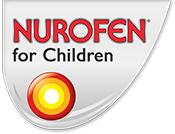Understanding Children's Pain

Like any parent, you don’t want to see your child suffer. But unfortunately, pain is a fact of life. At one time or another, your child will experience it – whether through an accident or illness, or simply a part of growing up.
But how does your child feel pain? What purpose does it serve? We’re here to help you understand your child’s pain a little better.
WHAT IS PAIN?
Throughout your child’s body there are millions of nerve fibres, some of which end in pain receptors called nociceptors. These nerve fibres are constantly telling your child’s brain what is going on in their body and their environment.
When your little one is ill or hurt, the nociceptors detect the tissue damage and transmit pain signals up the spinal cord and to the brain, like cars travelling along a highway.
At the same time, tissues around the affected area release chemicals called prostaglandins. When prostaglandins are released, they make nearby nerves very sensitive to pain and make these pain signals stronger.
Pain caused by damage to the body’s tissues is sometimes referred to as nociceptive pain. Ask your doctor or pharmacist if you need information about other types of pain.
WHY DO CHILDREN FEEL PAIN?
Pain is the body’s way of telling us that something somewhere needs some attention.
For example, if your child sprains an ankle, the pain tells them that they’ve hurt something and it needs to be looked at. They can then let you know.
WHY DO SOME CHILDREN FEEL MORE PAIN THAN OTHERS?
Each person has their own individual tolerance for pain. Some children (and many adults) have very high pain thresholds, while others do not.
One reason for this is perception. The brain works by association, so if a child’s had a particularly painful experience in the past, their brain may link any future pain with this experience. As a result, they may find it more difficult to cope with the new pain.
Pain thresholds are also affected by emotions. If your child is feeling worried, their threshold may be lower. On the other hand, strong emotions, such as excitement or fear, can temporarily stop your child from feeling pain.
HOW DO I KNOW IF MY CHILD IS ILL?
Before your child is able to speak, it can be hard to know exactly why they’re upset. Are they in pain or discomfort? Or is it something else?
Here are some of the signs of illness to look out for in your baby or toddler.
Your new-born or toddler could be ill if he or she:
• Is crying inconsolably
• Is irritable
• Is off their food
• Vomits
• Has frequent, liquid dirty nappies
• Looks flushed, feels hot
• Has a temperature above 38°C
• Is pale and cold
• Is breathing noisily and has a hoarse cough
• Cannot breathe properly through the nose
• Looks listless
• Is unusually quiet
• Is drowsy.
Contact your doctor immediately if your child:
• Turns blue or very pale
• Has difficulty breathing
• Has a fit or seizure caused by fever
• Is drowsy or hard to wake
• Becomes jerky or unusually floppy
• Does not seem to know you
• Has glazed eyes and cannot focus properly.
If you are worried in any way, always speak to your doctor.
